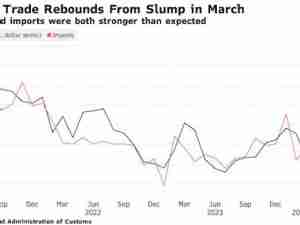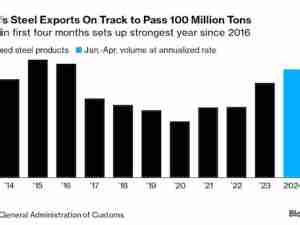President Donald Trump’s threat that he could tax cars imported from Europe was premised on the idea that German automakers pour Benzes and Bimmers into the U.S. while making it “impossible” for American cars to sell there. The full picture is more complicated.
General Motors Co., America’s largest carmaker, largely bailed from Europe last year for reasons that had less to do with protectionism than with billions of dollars in losses from decades of producing vehicles there that not enough Europeans wanted to buy.
And German automakers are already doing most of what Trump wants from them, building more vehicles for American consumers in the U.S. and even exporting from its shores. BMW AG and Daimler AG started erecting U.S. plants in the 1990s and have been boosting output to satisfy demand for luxury sport utility vehicles.
“German production has been moving here anyways,” said Kevin Tynan, a Bloomberg Intelligence analyst. “As the market has shifted to SUVs, they have scaled up with it. What works here—trucks—doesn’t work over there, and smaller vehicles don’t work here.”
Trump doubled down on his threat to put tariffs on EU vehicles by suggesting the U.S. could introduce a 25 percent tax. He said during a press conference with the Swedish prime minister on Tuesday that the U.S. “has been mistreated” and “taken advantage of by other countries.”
The comments were the latest in a tit-for-tat following his announced plan to subject imported steel and aluminum to significant levies. When EU officials suggested they might tax American bourbon, jeans and motorcycles in response, Trump thumb-punched back with his tweet about introducing auto import tariffs.
American companies face 10 percent levies on cars and parts going into Europe, while EU companies pay 2.5 percent to send goods here, according to the Center for Automotive Research. But GM’s decision to sell its European Opel and Vauxhall brands last year wasn’t based based on trade barriers—most of those cars were being built in England or on the European mainland.
Ford’s Quibble
Ford Motor Co.’s head of Europe quibbled with Trump’s claim that the EU has put up trade barriers that are impossible for American automakers to overcome.
“People in Europe will buy U.S. cars that are appropriate for the market,” Steven Armstrong, Ford’s president of Europe, Middle East and Africa, told reporters Tuesday. “If the product fits the market and meets the needs of the European market, consumers will buy them.”
German carmakers have been expanding production in the U.S. in part because the vehicles they build here are more catered to American tastes. Luxury buyers have been moving toward SUVs since the 1990s.
Love Affair
Because that love affair took hold in the U.S. before Europe, Germany’s carmakers set up shop in America, said Jeff Schuster, senior vice president of forecasting for LMC Automotive. The impact of tariffs on German vehicles would be blunted by “the sheer number of vehicles they are building here,” Schuster said.
Last year, Daimler, BMW and Volkswagen AG imported 54 percent of the cars they sold from European plants, down from 71 percent in 2010, according to LMC. BMW produces five different SUVs at the plant it opened in 1994 in Spartanburg, South Carolina. That factory alone makes BMW the largest U.S. auto exporter, with 272,000 vehicles sent to foreign markets last year.
Daimler AG opened a Mercedes plant in Alabama in 1997 to make M-Class SUVs. Now the company builds the GLS and GLE SUVs and C-Class sedans there.
German carmakers’ sedans would still take a hit if Trump were to slap a 25 percent tax on them, said Kristin Dziczek, director of the industry, labor and economics group at the Center for Automotive Research. But with Volkswagen’s Audi building SUVs in Mexico and BMW set to build its 3 Series sedan there next year, Trump would have to tax Mexico-built vehicles as well to keep the companies from using a workaround, she said.
While GM is mostly gone from Europe, save for exports of a few Cadillacs, Chevrolet Corvettes and Camaros, German carmakers now directly employ 43,000 employees in the U.S. They’re catching up to Ford, which has 54,000 employees in Europe, according to a company filing.
Don’t expect U.S. carmakers to ask the Trump Administration for help with the European market, Tynan said. “That’s not where the long-term growth is,” he said. “They’re focused on China and other emerging markets.”








